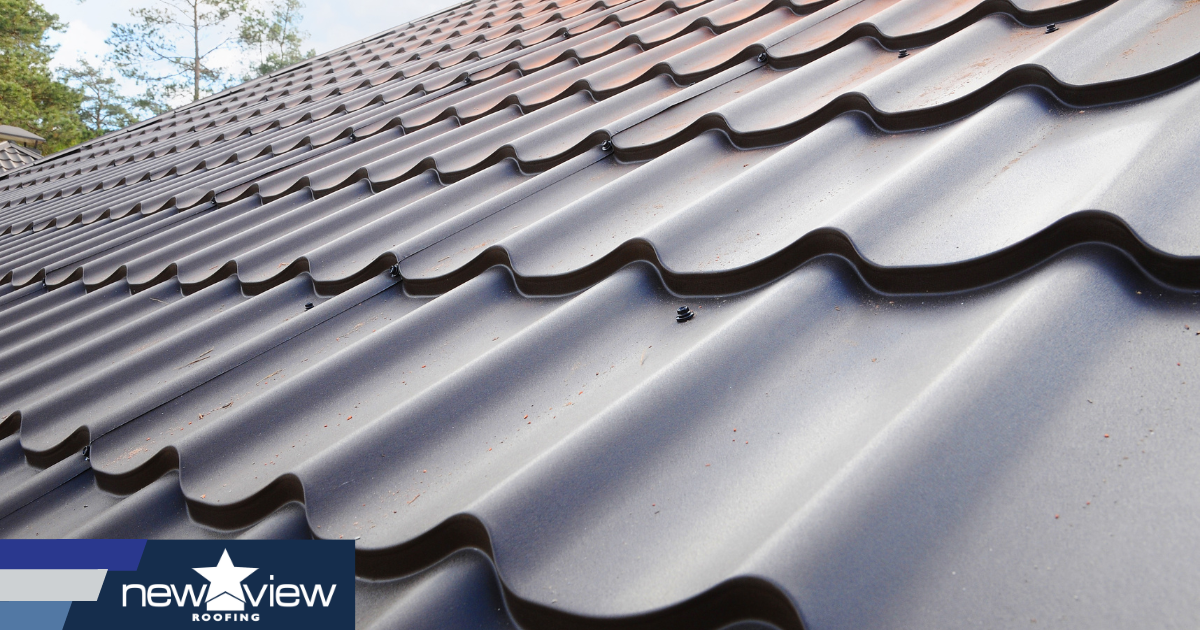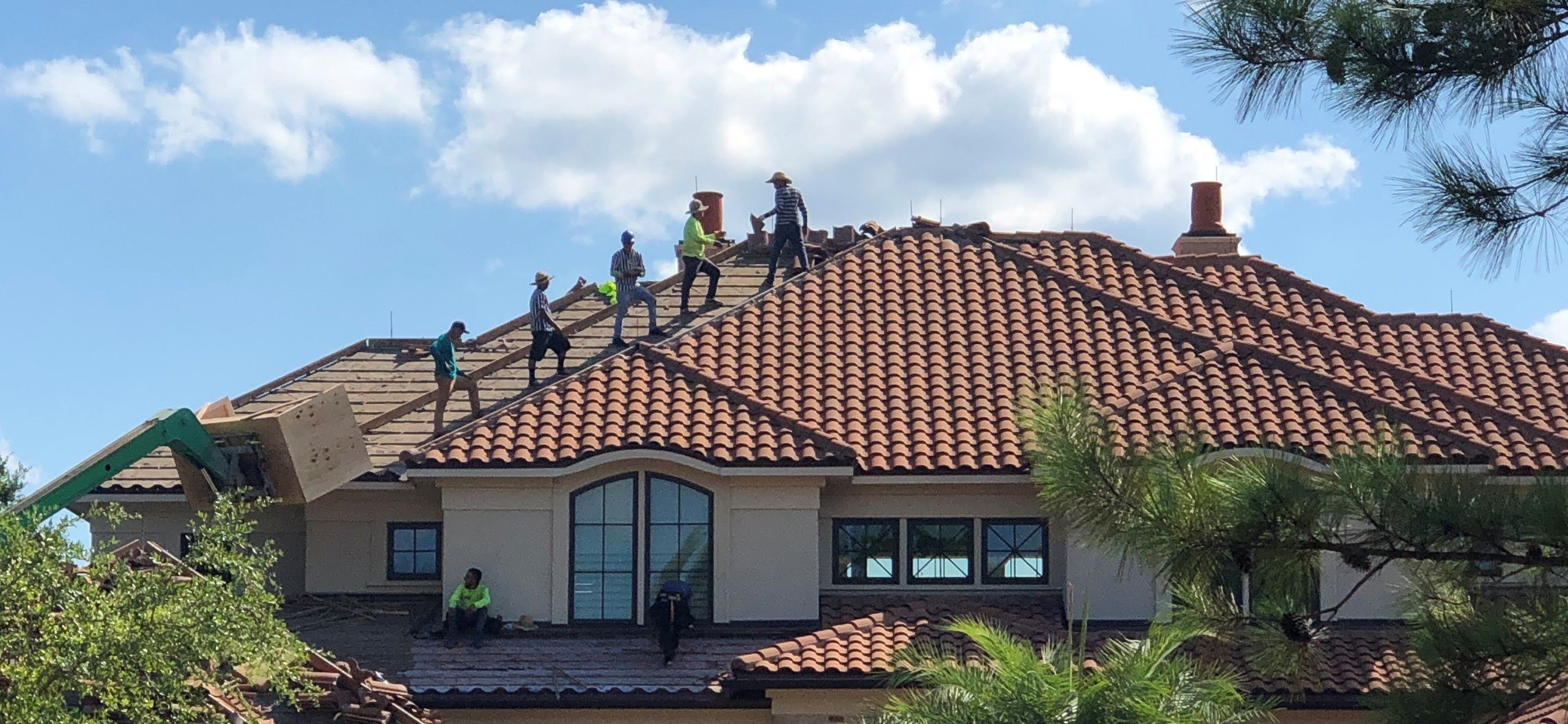Step-by-Step Overview to Discovering the Right Roofing Companies in Gainesville
Step-by-Step Overview to Discovering the Right Roofing Companies in Gainesville
Blog Article
Finest Practices for Ensuring Proper Roofing Ventilation
A well balanced consumption and exhaust air vent proportion, frequently 1:300, plays an essential role, with intake vents preferably positioned at the reduced side of the roof covering for trendy air entry and exhaust vents at the peak for cozy air leave. Keeping insulation away from vents is essential to avoid air flow restriction.
Understand Ventilation Basics
Appropriately recognizing air flow fundamentals is important for making certain the longevity and effectiveness of roof. Efficient air flow mitigates wetness buildup and temperature level extremes in the attic room, both of which can lead to significant structural damages in time. A well-ventilated roof assists in avoiding typical issues such as mold growth, wood rot, and ice dams, which can endanger the integrity of the roof products and the underlying structures.
The main goal of air flow is to facilitate the activity of air, enabling for a regular exchange in between the outside and indoor atmospheres. This balance is attained via a combination of consumption and exhaust vents that function with each other to maintain optimum air movement. Intake vents, generally located along the soffits or eaves, permit fresh air to enter the attic room area, while exhaust vents, commonly positioned at or near the roof ridge, make it possible for hot, moist air to get away.
Trick variables affecting the efficiency of roofing air flow consist of correct placement, adequate sizing, and making certain that both consumption and exhaust vents are unblocked. Normal assessment and maintenance are vital to recognize potential obstructions, damage, or inefficiencies in the ventilation system, consequently guarding the roof's performance and resilience.
Kinds Of Roof Vents
Roof vents play a vital duty in keeping efficient attic room ventilation and, by expansion, the general wellness of the roof. Various kinds of roofing vents are offered, each with one-of-a-kind advantages tailored to specific roof covering demands. Ridge vents, for example, are set up along the roof covering's optimal, permitting warm, humid air to leave from the attic. They supply continual ventilation and mix perfectly with the roofline, making them both efficient and visually pleasing.

Soffit vents are set up under the eaves and operate in tandem with roof vents to make certain a balanced intake and exhaust system. By enabling cooler air to enter from below, soffit vents help with the expulsion of hot air with top vents. Gable vents, located on the exterior walls of the attic, offer another effective service, particularly in homes with saddleback roofs.
Examine Your Present Air Flow

Following, consider the age and condition of your roof materials and air flow components. Older systems might not follow current building ordinance or may have degraded gradually, minimizing their efficiency. Conduct a comprehensive examination to identify any type of signs of damage, such as rust, damage, or spaces that could endanger the system's performance.
Additionally, determine the attic temperature and humidity levels. High temperatures and moisture can suggest inadequate air check my source flow - roofing companies in gainesville florida. Make use of a hygrometer and thermometer to acquire exact analyses, contrasting them with outside conditions. Consistent inconsistencies recommend prospective concerns that need addressing.
Installation Best Practices
Efficient installment of roofing air flow systems is critical for guaranteeing ideal performance and long life. Proper setup starts with understanding the certain air flow requirements of the structure and the roof covering it covers. This involves calculating the right ratio of consumption to tire vents, generally sticking to the 1:300 policy, which states one square foot of ventilation for every single 300 square feet of attic flooring room.

The placement of vents is equally crucial. Intake vents need to be set up at the roof covering's reduced side, typically in the soffits, to permit cool air to get in. Exhaust vents, on the various other hand, need to be mounted near or at the roof's optimal to facilitate the leave of warm, wet air. This produces a natural air movement that assists keep temperature and dampness equilibrium within the attic room area.
Seal all air vent links meticulously to prevent air leakages and potential water seepage. description Usage top notch products and comply with producer guidelines to make certain toughness and efficiency. Additionally, integrating ridge vents with baffles can substantially enhance airflow performance by preventing wind-driven rain and snow from going into the attic room.
Ultimately, specific installment of roof air flow systems alleviates potential concerns such as mold and mildew development, ice dams, and architectural damage, making sure the roof covering's integrity and the building's general health.
Normal Maintenance Tips
Uniformity in upkeep techniques is fundamental to guaranteeing the long-lasting effectiveness of roof air flow systems. Routine evaluations are essential, preferably done biannually-- in the spring and autumn. During these inspections, ensure that vents are cost-free of debris, nests, and other obstructions that can impede air flow. Look for any type of indications of wetness buildup or mold, as these can indicate incorrect ventilation or leaks (gainesville fl roofing companies).
Use a soft brush or a vacuum to eliminate dirt and debris from consumption and exhaust vents. Be careful not to damage the vent displays or louvers throughout the procedure.
Proper insulation is similarly essential. Make certain that attic insulation does not block the vents, as website here this can severely limit airflow. Reposition or change it to maintain an effective barrier. if any kind of insulation has actually shifted or worked out.
Last but not least, replace any damaged or missing elements quickly. Damaged vents, broken tiles, or shabby blinking can all add to insufficient ventilation and needs to be attended to right away. Regular upkeep makes sure that the roof air flow system works efficiently, thus expanding the lifespan of the roof itself.
Conclusion
Making sure correct roof air flow is paramount for keeping the performance and durability of a roof covering system. Adherence to the 1:300 consumption and exhaust vent ratio, paired with the tactical positioning of vents, is vital.
A balanced consumption and exhaust air vent proportion, typically 1:300, plays a crucial duty, with consumption vents ideally placed at the lower side of the roof for trendy air entry and exhaust vents at the height for cozy air leave. Consumption vents, generally located along the soffits or eaves, permit fresh air to get in the attic space, while exhaust vents, frequently located at or near the roof covering ridge, enable hot, moist air to escape.
Soffit vents are set up under the eaves and job in tandem with roofing system vents to guarantee a well balanced intake and exhaust system. By permitting cooler air to enter from below, soffit vents promote the expulsion of hot air via upper vents. Adherence to the 1:300 intake and exhaust air vent ratio, combined with the calculated placement of vents, is essential.
Report this page